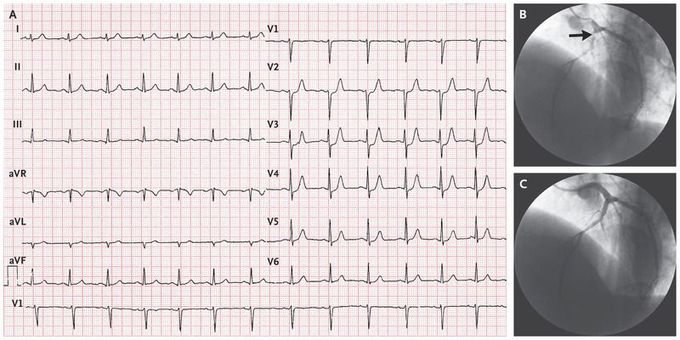


ECG Pattern Associated with Left Anterior Descending Coronary Artery Occlusion
A 36-year-old man presented to the emergency department with substernal chest tightness of 6 hours’ duration. The chest tightness was initially intermittent but became persistent 1 hour before presentation. He was a current smoker with a smoking history of 10 pack-years. An electrocardiogram (ECG; Panel A) showed upsloping ST-segment depression and tall, symmetric T waves in leads V2 through V5. The result of an initial troponin I test was normal. This upsloping ECG pattern of ST-segment depression that continues into tall, symmetric T waves in the precordial leads — sometimes referred to as the de Winter pattern — has been associated with occlusion of the proximal left anterior descending coronary artery. The patient underwent immediate coronary angiography, and the procedure revealed 95% stenosis of the proximal left anterior descending coronary artery (Panel B, arrow); the stenosis was treated successfully by means of percutaneous coronary intervention with stent placement (Panel C). The troponin I level rose to a peak of 7.19 ng per milliliter (normal value, <0.06) 14 hours after the procedure. A postprocedure ECG showed evolution of the ST-segment and T-wave changes, with new T-wave inversions in leads I, aVL, and V2 through V6 (see the Supplementary Appendix). The patient began guideline-directed medical therapy and was discharged home; he also received smoking-cessation counseling and was referred to a cardiac rehabilitation program.

